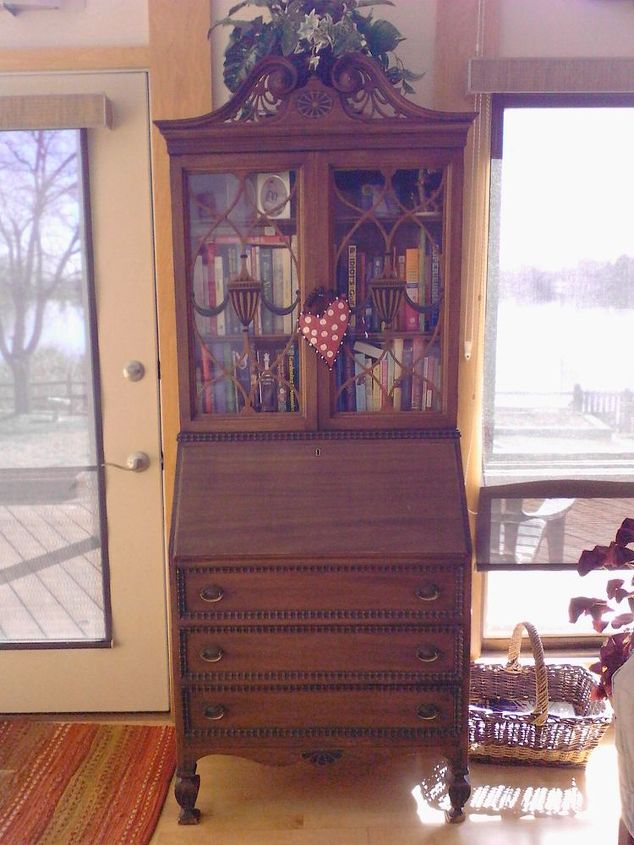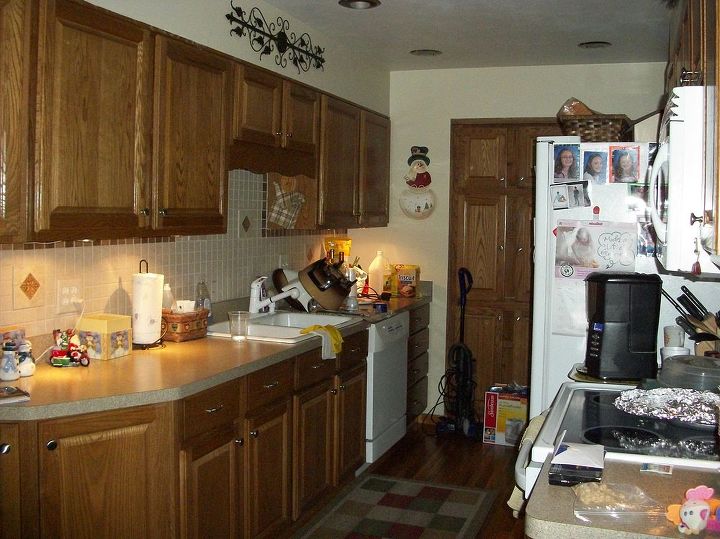We have hardwood floors. Before we moved in 10 yrs. ago we had them refinished.
-
If the damage is not "into" the wood but merely with the "finish" a screen and re-coat is a quick fix. This process does not produce the full amounts of dust that a "sand to bare wood" refinish does. If the finish is worn into the wood and the wood grain is darkened or soiled you will need a full sand.
 KMS Woodworks
on Jan 05, 2012
KMS Woodworks
on Jan 05, 2012
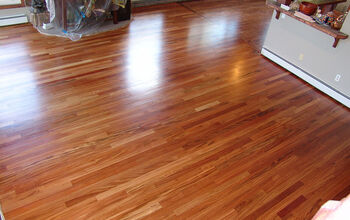
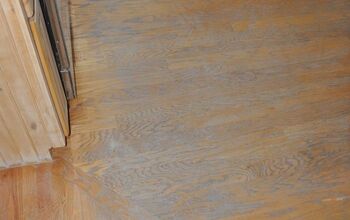 Helpful Reply
Helpful Reply -
-
KMS - Would I have to do the entire floor or could I just do the worn spots>
 Gene
on Jan 05, 2012
Helpful Reply
Gene
on Jan 05, 2012
Helpful Reply -
-
The answer depends what kind of finish you have on it now
 Nichter's Home Services Corp
on Jan 05, 2012
Helpful Reply
Nichter's Home Services Corp
on Jan 05, 2012
Helpful Reply -
-
In other words is it oil based poly, water based poly or acrylic, or a rubbing oil
 Nichter's Home Services Corp
on Jan 05, 2012
Helpful Reply
Nichter's Home Services Corp
on Jan 05, 2012
Helpful Reply -
-
It is oil base poly.
 Gene
on Jan 05, 2012
Helpful Reply
Gene
on Jan 05, 2012
Helpful Reply -
-
Spot finishes only look good when working with penetrating oils...a Surface finish like oil poly the whole room should be screened/ finished. Check out this article I wrote on floor finishes. http://www.networx.com/article/exotic-wood-floor-finishes-you-havent-s
 KMS Woodworks
on Jan 05, 2012
Helpful Reply
KMS Woodworks
on Jan 05, 2012
Helpful Reply -
-
I would touch up the worn spot, then screen the whole room and topcoat it all then
 Nichter's Home Services Corp
on Jan 08, 2012
Helpful Reply
Nichter's Home Services Corp
on Jan 08, 2012
Helpful Reply -
-
I agree a screen and coat would do the trick to restore the worn areas. It has been my experience doing only small areas can show the difference between the existing and newly coated areas, therefore I would suggest doing the whole room!
 Moda Floors and Interiors
on Jan 09, 2012
Helpful Reply
Moda Floors and Interiors
on Jan 09, 2012
Helpful Reply -
-
I advise my clients that a whole room refinish will yield the most satisfactory result. In fact, I rarely agree to do anything else because even after I've warned clients in the past that consistency throughout cannot be guaranteed, and they've agreed and understand up-front, they are more often than not dissatisfied with the result. Even when the result is virtually unnoticeable. I feel like I'm doing more of a disservice to my clients by "saving" them money up front when it's likely that the final product won't meet their expectations, regardless of how well I explain the process. If no floor transitions between rooms are present (thresholds between rooms) which would help reduce the amount of floor finishing needed, I would suggest doing yourself a favor and just re-do the entire room. As long as the room isn't gigantic the cost difference should be negligible. (Floor sand/screen & finish should cost no more than $5 psf.)
 Mike N
on Jan 09, 2012
Helpful Reply
Mike N
on Jan 09, 2012
Helpful Reply -
-
My problem(s) with doing the entire 'room' is that it would involve the kitchen, breakfast area, dinning room, entrance foyer and hallway. And a lot of furniture and 'stuff' to move and a lot to cover to keep the dust off.
 Gene
on Jan 09, 2012
Helpful Reply
Gene
on Jan 09, 2012
Helpful Reply -
-
Is screening the same as sanding? My floors was just sanded a year ago and I use that Bona stuff and they are still dull. Why, what am I doing wrong.
 Barbara
on Jan 09, 2012
Helpful Reply
Barbara
on Jan 09, 2012
Helpful Reply -
-
Screening is the "diet" version of a floor refinish process. The top of the existing finish in merely "roughed up" by a fine grit "screen" (the screen resembles a silicon carbide "dry wall" screen but is big and round to fit a floor buff). This mechanical abrasion allows a new top coat of finish to bind better. Sanding is where the old finish is sanded away all to way down to bare wood...and this process is dusty...the screening is very "tame" in the dust dept.. Screening only really works if the existing finish is only dull or slightly damaged...if the wear in down to the wood a screening will not fix it and the soiling or dirt is "sealed in". Also since screening is a light process any cupping or crowning of the wood is not corrected.
 KMS Woodworks
on Jan 10, 2012
Helpful Reply
KMS Woodworks
on Jan 10, 2012
Helpful Reply -
-
When refinishing, is oil or water better?
 Sheila B
on Jan 24, 2012
Helpful Reply
Sheila B
on Jan 24, 2012
Helpful Reply -
-
Oil is the only way in my book...it brings a lot more life and color to the party. These two pics show a before and after...the owner had installed rustic white oak and finished it with a basic water based product...this was a simple and basic job 1 or 2 coats. In less than a year I was brought in to "fix" it as the water base was failing in many areas. I completely sanded the floor and then applied 3 coats of an oil based poly as you can see from the after pics the floor looks like rustic white oak should.
 KMS Woodworks
on Jan 25, 2012
KMS Woodworks
on Jan 25, 2012

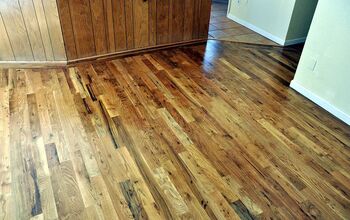 Helpful Reply
Helpful Reply -
-
I guess I will have to have you come redo mine sometime in the future! Love it.
 Barbara
on Jan 26, 2012
Helpful Reply
Barbara
on Jan 26, 2012
Helpful Reply -
-
Thanks KMS. I was told water was more "organic" or "green" and so I was just wondering which was really best. I love the way the floors in the picture turned out. Also, do you prefer wood from the US or is there any imported that you like better? What about if you were putting down a floor that was prefinished? what are your thought on a prefinished floore?
 Sheila B
on Jan 26, 2012
Helpful Reply
Sheila B
on Jan 26, 2012
Helpful Reply -
-
There are some oil based finishes that are "greener" than others...this has to do with VOC's and such. Some of the catalyzed finishes (Glitza) can be darn right nasty and require the use of organic respirators. A locally produced domestic floor is very green in the sense that it is local. As far as domestic floor / exotic goes its a mixed bag. A good number of the exotics are much harder in their Janka hardness ratings and offer colors not found in your basic oaks and maples. As a wood worker and flooring guy I love working with cherry, one of my favorites. When I remodeled my home I installed about 600 sq ft of Jatoba (Brazilian Cherry) in my master bed room. I used a sand in place product and finished it with linseed oil...a green penetrating finish. Personally I prefer the sand in place floors as the little groove between boards (in prefinished) is distracting to me. Check out this article I wrote on floor finish types. http://www.networx.com/article/exotic-wood-floor-finishes-you-havent-s
 KMS Woodworks
on Jan 27, 2012
KMS Woodworks
on Jan 27, 2012
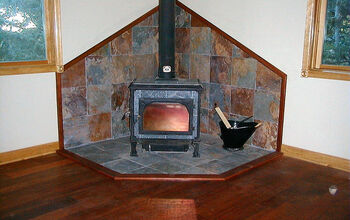
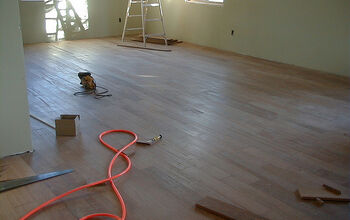 Helpful Reply
Helpful Reply -
-
Some times you can get away with just a buff and coat. I would try that first.
 Builders Floor Covering, Inc.
on Feb 01, 2012
Helpful Reply
Builders Floor Covering, Inc.
on Feb 01, 2012
Helpful Reply -
-
You need a Screen & Recoat, Buff the floor with a 120 grit screen and then apply two coats of finish. This will prep the floor so the finish will bond and restores the gloss.
 Dustless Wood Floor Refinishing
on Mar 07, 2012
Helpful Reply
Dustless Wood Floor Refinishing
on Mar 07, 2012
Helpful Reply -
Related Discussions
Should I paint this antique secretary, or refinish it?
This was my grandmothers pride and joy while she was alive. I love it also, but the finish has gotten old and scaly. I'm thinking about painting and antiquing it , bu... See more
How can I lighten my dark stained deck, or even paint parts white?
The previous owners used an oil-based, semi-transparent, dark walnut brown stain on the deck they built. I want to lighten up the area, perhaps even paint the deck c... See more
What is the best way to paint high gloss white kitchen cabinets?
We are remodeling our kitchen and like the high gloss cabinets but don't know what is the best paint to get that effect. Our current cabinets are a regular semi-glos... See more
What color to paint above the kitchen cabinets
So I am stumped, as you may have seen from some of my other post, I am adding blue to my kitchen and family room. I'm trying to get out of the red's, greens, golds et... See more
Paint color for small galley kitchen oak cabinets/flooring.
Galley kitchen, oak cabinets, oak flooring, skylight for natural only. Backsplash is beige with a few terra cotta triangles on backsplash. My kitchen also in attached... See more
What color should I paint my kitchen cabinets
Very hard to sand in the grooves of the knotty pine. The finish is worn off in spots. So we thought if painting for a quick fix any suggestions. We just painted the w... See more
